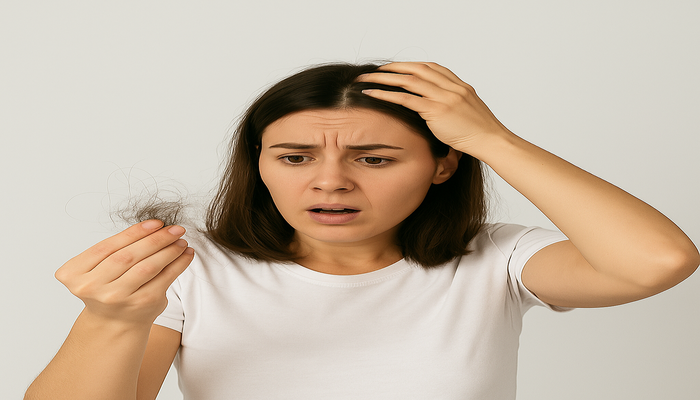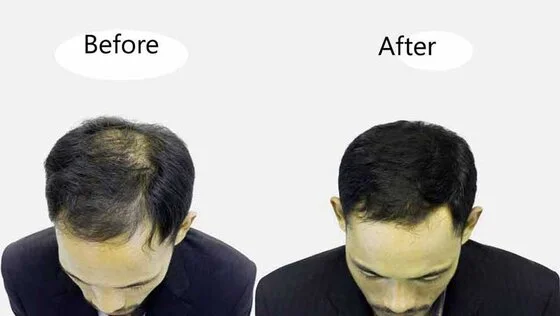These Easy Tips are Worth Trying to Combat Hair Loss
People of any age or gender can experience hair loss, making it a universally relatable issue. Hair thinning affects about 21 million women and 35 million men worldwide. Although experts consider a follicle shedding of 50–100 hairs daily as normal, drastic thinning can be pretty upsetting.
The good news is that you can fight hair loss and encourage better hair development by adhering to some simple and effective strategies. A big and luscious head of hair is much easier to maintain if you include these activities as a part of your everyday routine.
Ironically, a big percentage of male baldness is due to genetic reasons, 79% to be precise. Evidently, “nonshared environmental effects” form a strong reason behind 21% of baldness cases. Even doctors find it hard to address every single reason responsible for progressive balding.
A hair transplant is the last resort in any such instance. Nevertheless, we are not here to talk about hair transplants, but about the easy home remedies that can combat hair loss at the very nascent stage. Let’s find out more about these positive solutions.
Balanced diet
You should know how your food is influencing your hair if you want to maintain your health over time. Having a balanced diet comprising protein, minerals, and vitamins in adequate quantities would be beneficial in this regard. It will support healthy hair growth.
Almost every person should have a diet high in iron, copper, vitamin B1, and omega-3 fatty acids. Aim for a diet rich in eggs, almonds, vegetables, and fatty fish to help you attain your hair health goal. These wholesome meals will be beneficial.
Consulting with your nutritionist, dietician or your regular doctor would be advisable to help you maintain an adequate diet. If you are noticing a rapid increase in your hair loss, the dietary suggestions of a professional become even more inevitable.
Regular scalp massage
A simple way to promote hair development and reduce the instances of
hair loss is to massage the scalp often. Improved circulation to the hair follicles is one way this approach helps keep your scalp healthy.
A preferable practice would be to use light and circular strokes with your fingertips to massage your scalp for five to ten minutes at least twice a week. Do not start scratching the hair as it will damage your scalp instead of healing it.
Add some natural oils like jojoba, coconut, or almond to make the massage more effective. These oils do much more than making your hair and scalp feel good. They also strengthen and nourish them.
Regular exercise for healthy hair
Regular physical exercise is good for your health. It is essential for improving blood flow throughout the body, including its circulation to the head. This enhanced blood flow ensures that hair follicles get the nutrients they need to grow in the best way possible.
It is good to aim for at least 30 minutes of mild exercise every day to keep your hair healthy. Your hair will stay strong with regular workouts if you live a busy life. It could be brisk walks, jogging, or something else you love.
Avoid excessive styling and heat
When used excessively, heat-styling tools like curling irons, hair dryers, and irons can cause damage to hair and cause it to fall out. Let your hair air dry naturally rather than using heated equipment to style it if possible.
When opting for heat styling becomes inevitable, a heat protectant spray can aid in forming a barrier to reduce the damage. In the long run, it can strengthen your hair and reduce the likelihood that heat damage will occur.
Choose the correct hair products
Using hair care products correctly is essential to avoid hair loss and keep hair healthy. Shampoos and conditioners for different hair types should be your priority. Make sure they don't contain any harmful compounds that might cause harm.
Look for items with vitamins, keratin, and biotin added. These components are essential for healthy hair growth and strength. A healthy scalp consisting of strong and beautiful hair results from an educated approach to hair care.
Stay hydrated
How well you can keep yourself hydrated will determine your hair's condition and overall health. The benefits of maintaining moisture in your hair are difficult to overestimate. Consuming adequate water is essential to prevent hair breakage and drying out.
To maintain the health of your body and hair, try to consume eight glasses of water every day. With this easy routine, your hair will stay nourished, strong, and shining. Most people avoid drinking abundant water due to busy work schedules or the fear of frequent visits to the loo.
The winter season also decreases the urge to drink water significantly. But these factors do not justify the dearth of water in your body. It is therefore better to keep drinking water to protect yourself from unwanted health and hair hazards.
Manage stress
Not surprisingly, stress is one of the leading causes of hair loss. Increased shedding occurs when the natural hair growth cycle suffers disruption due to chronic stress. To tackle this problem, you should incorporate activities that reduce stress into your regular schedule.
Practices like deep breathing techniques, yoga, and meditation could prove beneficial in dealing with stress. Another critical factor in keeping a thick and full head of hair is prioritizing self-care and implementing healthy ways to manage stress.
Avoid wearing tight hairstyles
Although they appear fantastic, hair roots can face troubles because of styles like ponytails, twists, and buns. As a result, hair loss and broken hair may occur. A better alternative would be to try loose hairstyle ideas, as they will place less strain on the hair cells and promote healthier hair. Likewise, if you enjoy wearing tight hairstyles, give them a break so your hair can flow more freely.
You can easily preserve your hair's natural beauty and health with ease by wearing it in open styles. Some of the recommended hairstyles that will not affect your hair roots may include messy bun, low bun, low ponytail, braided bun, pulled-out Dutch braid, space buns, and so on.
Regular hair trimming
Trims are an essential part of keeping hair healthy, but they won't stop hair loss from happening unless you have them often. It is good to trim your hair regularly to avoid split ends from climbing the hair shaft and breaking. Your hair's health will improve because of this routine.
It helps in making the hair look smoother and shinier while reducing the risk of damage that might cause hair loss. A simple yet effective method is to have regular haircuts to keep your hair looking healthy and strong.
Consult an expert
If you are losing a lot of hair and it keeps happening persistently, you should see a medical expert, a trichologist, or a dermatologist. These professionals are well aware of the probable reasons behind hair loss. They can provide you with relevant information about specific
hair loss treatments and suggest ways to make your life better.
Early consultation allows you to move forward quickly. Trusting the knowledge of a professional will be instrumental in taking care of your hair health issues in their entirety. It is therefore important to look for an experienced hair care professional instead of consulting inexperienced and less qualified people, who claim to be hair restoration experts.
Conclusion
Preventing hair loss doesn't have to be complicated or time-consuming. If you try out simple things daily, your hair will be stronger and fall out less. Wait a bit before you notice any changes. Consistency is the key. Be patient and embrace these practices for lasting results as part of your hair care routine.
If the hair fall continues despite your attempts to protect it through recommended tips, you should see a doctor immediately. If things go beyond control because of progressive baldness, a hair transplant is the last hope that your doctor will suggest.
If any such case arises, your responsibility is to look for the best hair transplant experts around you.
Schedule your appointments with them and visit them personally for face-to-face consultation.
Notice their way of talking, their knowledge about hair loss and the ways to combat hair loss, and their expertise in providing hair restoration treatment. In addition, make sure to know the
cost of the treatment they are asking for. All these aspects will help you to
choose the best doctor for the treatment.



